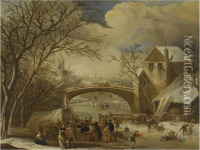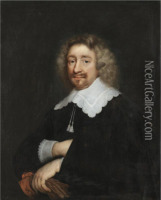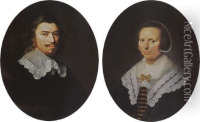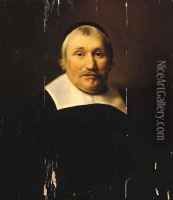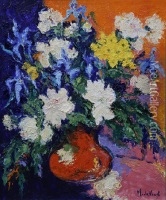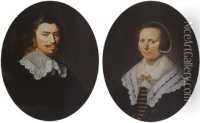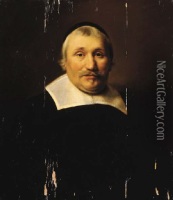Abraham de Vries Paintings
Abraham de Vries was a Dutch painter from the Golden Age of Dutch painting, a period in the 17th century when Dutch art, especially in Amsterdam, was highly acclaimed for its realism, attention to detail, and innovative use of light and shadow. Born in 1590, de Vries's life and career were emblematic of the era's artistic movements and the broader cultural context of the Dutch Republic, which was experiencing unprecedented wealth and a burgeoning interest in the arts among its middle and upper classes.
De Vries is known for his portraits and historical paintings, which exhibit the precision and realism characteristic of Dutch Golden Age painting. Although his work was less well-known than that of some of his contemporaries, such as Rembrandt or Vermeer, de Vries contributed significantly to the era's artistic landscape through his adept use of color, composition, and his ability to capture the psychological depth of his subjects.
Throughout his career, de Vries was influenced by the prevailing artistic trends of his time, including Caravaggism, with its dramatic use of light and shadow, and the detailed realism of Flemish Baroque painting. His works often reflect the socio-economic and cultural conditions of the Dutch Republic, providing insights into the lives of its citizens during a period of great prosperity and cultural achievement.
De Vries spent most of his life in Amsterdam, where he was part of a vibrant community of artists. His paintings were sought after by the wealthy merchants and civic leaders of the city, who were eager to commission works that would reflect their status and the burgeoning sense of Dutch national identity. Despite his success, not much is known about his personal life, and his legacy has been somewhat overshadowed by the more famous artists of his time.
Abraham de Vries died in 1650, leaving behind a body of work that continues to be studied and appreciated for its contribution to the Dutch Golden Age of painting. His paintings are housed in various museums and collections around the world, where they stand as testaments to the skill and artistic vision of this somewhat underappreciated master.


